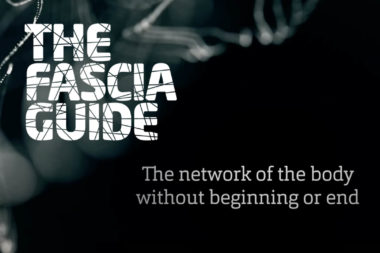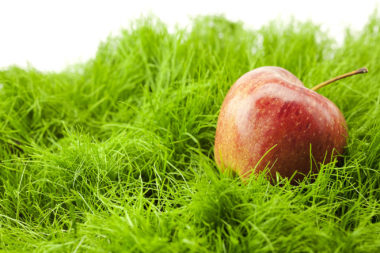

7 things you should now about Vitamin C
Join the Fascia Conversation Today!
Most people might know that Vitamin C is good for the immune system – but did you know that Vitamin C helps the production of new Fascia? Or that we use up 7 times more Vitamin C during stress?
In March 2020 we asked Camilla Ranje Nordin to write a series of articles about boosting the immune system – and since then she has not stopped talking about Vitamin C.
So… In this article we list seven things you should know about Vitamin C
- Humans do not produce Vitamin C – but almost all other mammals do
- There is a lot of new research about the functions of Vitamin C
- Here are the top 12 functions of Vitamin C
- Can Vitamin C be used in treatment of cancer, pneumonia & other diseases?
- We need more Vitamin C when under pressure (i.e. stress, disease, exercise)
- It is a lot harder than you think to get enough Vitamin C from food
- How do you figure out how much Vitamin C you need?
1. Humans do not produce Vitamin C – but almost all other mammals do
The vast majority of mammals, with a few exceptions, produce vitamin C in their liver, from glucose, endogenous. Exceptions are most primates, where we humans belong, as well as guinea pigs and some bat species. That means we have to get everything we need from what we eat. Our reference daily intake (RDI) in Sweden, according to the Swedish National Food Administration, is 75 mg for an adult, something more if you are pregnant or breastfeeding.
A gorilla, which, like us, cannot form its own vitamin C, gets 30 mg / kg and day via its food (green food), which becomes, for a gorilla of 150 kg, 4500 mg / day. A guinea pig, weighing just under one kg, gets 30 mg / day via the food itself. Converted to a person of 70 kg, this would correspond to 2100 mg / day.
A goat produces 7 times more Vitamin C while under stress. How much more Vitamin C are you getting when you are stressed?
A goat, which produces its own vitamin C, produces 185 mg / kg and day when it is healthy, and up to 1400 mg / kg and day when it is exposed to some form of stress. Converted to 70 kg, it is 13000 mg (13 g) in healthy condition and up to 100000 mg (100 g) under stress
Our RDI of 75 mg / day corresponds to about 1.1 mg / kg!
As stressed related problems have increased during the last decade this should set of an alarm.
2. There is a lot of new research about the functions of Vitamin C
Why Vitamin C has not gained more attention is a mystery considering how much research there is regarding its vital functions and health benefits.
When we received the draft for this article, two third of the text was the list of references. Of those 83 research articles, more than half are from the last 15 years – which might explain why so few doctors and institutions are talking about the importance of Vitamin C
Vitamin C became known in the early twentieth century when it was identified as the substance that cures scurvy, a disorder in collagen formation, which affected people with severe vitamin C deficiency.
Since collagen is the body’s most common protein and is found in all types of connective tissue (skeleton, cartilage, fascia, etc.), collagen synthesis is highly essential.
In the late 18th century, it was discovered that lemon juice cured scurvy and in 1937 the physiologist and biochemist Albert Szent-Györgyi received the Nobel Prize for his discovery of vitamin C. Scurvy was also associated with pneumonia in early literature, so if vitamin C cured scurvy it might also have effect on pneumonia… (read more about that here)
This RDI is set to avoid scurvy, but Vitamin C has so many more functions in the body than “just” contributing to collagen synthesis.
However, humans have a more efficient mechanism, than a guinea pig, to recover and utilize the vitamin C that is available. The concentration of vitamin C in various tissues of the body also differs significantly, for example 0.2 mM in muscles and heart while in brain and adrenal glands there is up to 10 mM. The eyes also contain large amounts. These large amounts in the adrenal glands suggest that it cooperates with stress hormones.
There is a huge amount of research on vitamin C and, it has been found that it has a great deal more physiological functions in the body than preventing scurvy.
It is a co-enzyme (catalyst) that, in addition to contributing to the formation of collagen, also participates in a variety of other reactions, such as energy metabolism, nervous system function, contribute to both innate and adaptive immune system function.
It is a powerful antioxidant that protects against free radicals and also acts as an antihistamine.
It also has antibacterial and antiviral effects.
3. Here are the top 12 functions of Vitamin C
Vitamin C has so many important functions in the body that you can easily get confused.
To help simplify it we have made a list of the 12 most important functions of Vitamin C.
- It contributes to the formation of collagen fibers in connective tissue and fascia.
- Strengthens both the innate and adaptive immune system.
Needed for the function of the phagocytes (innate immune system). It is 10 times higher in white blood cells than in plasma.
Needed for maturation and function of T cells (adaptive immune system), production of interferon, affect virus replication.
Affects stem cells and differentiation into mature blood cells. Recent research shows that blood cell-forming stem cells in the bone marrow contain up to 20 times as much vitamin C as mature differentiated cells.
- A powerful antioxidant, it takes care of excess amounts of free radicals, by donating electrons.
- Needed for the functioning of the nervous system, contributes to the synthesis of neurotransmitters, and can therefore help to reduce depression.
- Increases the absorption of iron ions.
- Protects the endothelial cells in the vessel walls, which becomes more elastic and blood pressure decrease. Free radicals damage the endothelial cells in the vessel walls.
- Reduces harmful cholesterol.
- Participates in the transport of fatty acids.
- Has an antibacterial and antiviral effect and improves the healing of infections.
- Antihistamine, can be used in allergies and pollen reactions.
- Reduces stress effects.
4. Can Vitamin C be used in treatment of cancer, pneumonia & other diseases?
There is a lot of research where vitamin C has been shown to be effective in treating a variety of diseases, such as pneumonia and cancer. When vitamin C is used for therapeutic purposes it is given in extremely high doses. More recently, intravenous treatment of cancer in megadoses up to 100-200 g has shown good results. It has also increased the effect of traditional chemotherapy and diminish the side effects so that the patients will feel better.
Really high doses are required to treat, for example, cancer, also depending on stage of the disease, and when given intravenously, uptake is 100%. Sepsis has also been treated intravenously with good results.
Vitamin C, in addition to the above, has been shown to help in the treatment of other inflammations and infections such as tuberculosis, whooping cough, tetanus, mononucleosis, polio, jaundice, poisonings, improve wound healing and burns, positive effect in diabetes, hemorrhage and bleeding gum, etc, etc.
Most of these positive effects of vitamin C administration are attributed to its powerful antioxidant properties and effects on the immune system.
Just recently, in April 2020, a study has been started to investigate vitamin C infusion for the treatment of severe COVID-19 infected pneumonia patients in Wuhan, China. The study includes 140 patients, a placebo control group and a group given intravenous vitamin C at a dose of 24 g/day for 7 days. This study should be completed in September 2020.
5. We need more Vitamin C when under pressure (i.e. stress, disease, exercise)
Oxidative stress occurs when the body is subjected to some form of stress, such as illness, mental stress, physical exertion, various toxins, alcohol, smoking, obesity, etc.
There are always, even normally, a certain amount of free radicals produced in the cell metabolism but when overload to stress, the production will increase and if it becomes too much they can seriously damage cells and cause inflammation and diseases.
Antioxidants are needed to fight and neutralize these free radicals. Vitamin C, ascorbic acid, is a powerful antioxidant as it has two electrons to give, compared to other common antioxidants that have only one electron over (see separate section on oxidative stress).
Vitamin C is thus effective in combating oxidative stress and is then consumed more quickly in illness, stress, physical exertion, smoking, obesity etc. Inflammation creates severe oxidative stress and the free radicals then act as signal proteins, so they are needed to some extent, but too much harms us, as already said. However, the oxidative stress creates even more inflammation, a vicious cycle occurs.
The more oxidative stress you are exposed to, the more vitamin C is consumed. Animals that produce vitamin C themselves also produce more vitamin C when exposed to stress, as the goat in the example above.
In a study, the concentration of vitamin C in plasma and muscle has been measured in severely ill patients with vitamin C deficiency who, when given recommended (low) doses of 125 mg / day, orally or intravenously, have not received increased levels in plasma, neither in musculature.
This indicates that the disease consumes a lot of vitamin C and thus higher doses are needed to raise the levels.
6. It is a lot harder than you think to get enough Vitamin C from food
Vitamin C is only found in fruits, berries and vegetables, and it is best with fresh and unaffected raw vegetables, as vitamin C is quickly destroyed when it is cooked, frozen or otherwise processed. Pressed fruit juice instantly loses vitamin C content because it oxidizes rapidly with oxygen, due to its instability. It is one of the least stable vitamins.
Yellow and red bell peppers, cauliflower, broccoli, curly, spinach, citrus, kiwi, brussel sprouts, horse radish, rosehip, nettle, strawberries, and so on are major vitamin C sources. If you eat large amounts of these fruits and vegetables, in fresh form, you can get around 500 mg, maybe up to 1 g. However, the nutritional content of plants is not constant, but depends on soil, sun hours, fertilizers, water supply, organic or conventional cultivation etc.
Unfortunately, the food we eat today is often depleted of vitamin C, when it may have been cooked, frozen, and cooked or heated again. If we look at the food situation for our elderly, at homes for elderly or at hospitals, then the food is probably not particularly rich in vitamin C. In addition, they often eat small portions when their appetite is low.
Vitamin C supplements are also not often given in hospitals, so you can probably assume that most sick people, when they need it most, have a large deficit of vitamin C.
7. How do you figure out how much Vitamin C you need?
Vitamin C dosage, and the body’s needs, vary and depend on many different factors; the individual’s genetics, eating habits, lifestyle, daily form, alcohol, smoking, drugs, stress resistance, chemical effects, traveling etc.
There is a lot of research that shows that higher doses than today’s recommended have positive effects and that it is important to constantly adjust their dosage according to how you feel that particular day.
It is difficult to overdose with vitamin C, it is not stored in the body but is cleared with the urine, and there is no reported death related to vitamin C. The LD-50 dose is 11900 mg / kg body weight, taken at the same time (aspirin 200 mg, paracetamol 1944 mg). LD-50 is a measure of how toxic a substance is, the dose at which 50% of the test animals die. The lower the value, the more toxic the substance.
A person of 70 kg then needs to eat near to one kg, at the same time. What is most likely to happen at high intake is that you get a rumble stomach and diarrhea, which will disappear if you stop taking vitamin C or reduce the dose. The amount of what the stomach can tolerate varies according to the body’s needs, if you are exposed to severe oxidative stress, you can handle a higher dose.
Why has vitamin C not become more accepted for the treatment of various diseases? Maybe it is too simple?
Dr. Frederick R. Klenner, wrote in an article in 1957 about a case he was treating, for poison bites by the black widow spider. (The black widow spider: case history. Tri-state with J, Dec 1957, vol5, no. 10, pp. 15-18).
”…. there are some physicians who would stand by and see their patient die rather than use ascorbic acid – because in their finite minds, it exists only as a vitamin.”
According to several researchers, the maintenance needs of an adult can vary between 500 mg and 10g per day, spread throughout the day, depending on the circumstances. A minimum intake of 2-4 g per day is often a good daily maintenance dose for adults, preferably spread to 3-4 times a day. As soon as you feel the smallest signs of illness, the dose is increased radically and taken more frequently, at least every two hours.
One way to find out what exactly you can tolerate is to dose 1-2 g every two hours and note the total amount when your stomach says stop, then reduce to 50-90% of that amount. This should be the ideal dose for that particular stress level and life situation.
Worth noting is that a cigarette consumes 25 mg of vitamin C. High sugar intake also counteracts the effects of vitamin C, which means that the intake must increase.
If you have kidney problems or have problems with kidney stones you can regard some caution, but there is no clear evidence that vitamin C increases the risk of kidney stones. On the contrary, kidney stones are treated with vitamin C. Dehydration is probably a major problem in kidney stones. If you are kidney transplanted it can be contraindicated as well as if you suffer from a deficiency of the enzyme Glucose-6-phosphate dehydrogenase (cause anemia), but the latter applies more to high doses, mainly intravenously, and then it should be checked first with blood test.
Featured research about Vitamin C
- Ang A. et al, 2018. Vitamin C and immune cell function in inflammation and cancer.
- Belfield, W.O. and Stone, I. 1975. Megascorbic and megascorbic therapy: A new orthomolecular modality in veterinary medicine.
- Bucca C. et al, 1990. Effect of Vitamin C on Histamine Bronchial Responsiveness of Patients With Allergic Rhinitis.
- Camarena V. & Wang G, 2017. The Epigenetic Role of Vitamin C in Health and Disease.
- Cameron, E. & Pauling, L. 1976. Supplemental ascorbate in the supportive treatment of cancer: Prolongation of survival times in terminal human cancer.
- Cameron, E. & Pauling, L. 1978. The orthomolecular treatment of cancer: Reevaluation of prolongation of survival times in terminal human cancer.
- Cameron, E. & Pauling, L. 1979. Cancer and Vitamin C.
- Campbell, G.D. Jr., Steinberg, M.H. and Bower, J.D. 1975. Ascorbic acid induced hemolysis in G-6-PD deficiency.
- Carr A.C, 2020. A new clinical trial to test high-dose vitamin C in patients with COVID-19.
- Carr A.C, 2020. Is the VITAMINS RCT indicating potential redundancy between corticosteroids and vitamin C?
- Carr A.C. & Cook J, 2018. Intravenous Vitamin C for Cancer Therapy – Identifying the Current Gaps in Our Knowledge
- Carr A.C. & Maggini S, 2017. Vitamin C and Immune Function.
- Carr A.C. et al, 2013. A Randomized Steady-State Bioavailability Study of Synthetic versus Natural (Kiwifruit-Derived) Vitamin C.
- Carr A.C. et al, 2013. Human skeletal muscle ascorbate is highly responsive to changes in vitamin C intake and plasma concentrations.
- Carr A.C. et al, 2017. Hypovitaminosis C and vitamin C deficiency in critically ill patients despite recommended enteral and parenteral intakes.
- Cathcart, R.F. 1975. Clinical trial of vitamin C.
- Cathcart, R.F. 1976. Clinical use of large doses of ascorbic acid. Presented at the annual meeting of the California Orthomolecular Medical Society, San Francisco, February 19, 1976.
- Cathcart, R.F. 1978. Vitamin C as a detoxifying agent. Presented at the annual meeting of the Orthomolecular Medical Society, San Francisco, January 21, 1978.
- Cathcart, R.F. 1979. Vitamin C – The missing stress hormone. Presented at the annual meeting of the Orthomolecular Medical Society, San Francisco, March 3, 1979.
- Cathcart, R.F. 1981. The method of determining proper doses of vitamin C for the treatment of disease by titrating to bowel tolerance.
- Chen Q. et al, 2005. Pharmacologic ascorbic acid concentrations selectively kill cancer cells: Action as a pro-drug to deliver hydrogen peroxide to tissues.
- Chen Q. et al, 2007. Ascorbate in pharmacologic concentrations selectively generates ascorbate radical and hydrogen peroxide in extracellular fluid in vivo.
- Chen Q. et al, 2008. Pharmacologic doses of ascorbate act as a prooxidant and decrease growth of aggressive tumor xenografts in mice.
- Cousins, N. 1 979. Anatomy of an Illness as Perceived by the Patient.
- Fowler A.A. et al, 2014. Phase I safety trial of intravenous ascorbic acid in patients with severe sepsis
- Gan L. et al, 2019. Vitamin C Inhibits Triple-Negative Breast Cancer Metastasis by Affecting the Expression of YAP1 and
- Garcia-Diaz et al, 2014. Vitamin C in the Treatment and/or Prevention of Obesity.
- Gerecke C. et al, 2018. Vitamin C promotes decitabine or azacytidine induced DNA hydroxymethylation and subsequent reactivation of the epigenetically silenced tumour suppressor CDKN1A in colon cancer cells.
- Gillberg L. et al, 2018. Vitamin C – A new player in regulation of the cancer epigenome
- Gorton H.C. & Jarvis K, 1999. The Effectiveness of Vitamin C in Preventing and Relieving the Symptoms of Virus-induced Respiratory Infections.
- Greenwood, J. 1964. Optimum vitamin C intake as a factor in the preservation of disc integrity.
- Grosso G. et al. 2013, Effects of Vitamin C on health: a review of evidence.
- Hasselholt S. et al, 2015. Distribution of vitamin C is tissue specific with early saturation of the brain and adrenal glands following differential oral dose regimens in guinea pigs.
- Hemilä H. & Suonsyrjä T, 2017. Vitamin C for preventing atrial fibrillation in high risk patients: a systematic review and meta-analysis.
- Hemilä H. 2017, Vitamin C and Infections.
- Herbert, V. and Jacob, E. Destruction of vitamin B12 by ascorbic acid. JAMA, 230:241-242, 1974.
- Hooper M.H. et al, 2019. The Adrenal-Vitamin C Axis: From Fish to Guinea Pigs and Primates.
- Huijskens M.J. et al, 2016. Ascorbic acid serum levels are reduced in patients with hematological malignancies.
- Humphrie S. 2014. Föreläsning om C-vitamin för Svenska Sällskapet för Ortomolekylär Medicin.
- Juraschek S.P, et al, 2012. Effects of vitamin C supplementation on blood pressure: a meta-analysis of randomized controlled trials.
- Kalokerinos, A. 1974. Every Second Child, Thomas Nelson, Australia, 1974.
- Kim H. et al. 2012, The Analysis of Vitamin C Concentration in Organs of Gulo-/- Mice Upon Vitamin C Withdrawal.
- Kim W-Y. et al, 2018. Combined vitamin C, hydrocortisone, and thiamine therapy for patients with severe pneumonia who were admitted to the intensive care unit: Propensity score-based analysis of a before-after cohort study.
- Kim Y. et al, 2013. Vitamin C Is an Essential Factor on the Anti-viral Immune Responses through the Production of Interferon-a/b at the Initial Stage of Influenza A Virus (H3N2) Infection.
- Klenner, F.R. 1948. Virus pneumonia and its treatment with vitamin C
- Klenner, F.R. 1949. The treatment of poliomyelitis and other viral diseases with vitamin C.
- Klenner, F.R. 1971. Observations on the dose and administration of ascorbic acid when employed beyond the range of a vitamin in human pathology.
- Klenner, F.R. 1974. Significance of high daily intake of ascorbic acid in preventive medicine.
- Lewin, S. 1976. Vitamin C: Its Molecular Biology and Medical Potential
- Li R, 2016. Vitamin C, a Multi-Tasking Molecule, Finds a Molecular Target in Killing Cancer Cells.
- Libby, A.F. and Stone, I. 1977. The hypoascorbemia-kwashiorkor approach to drug addiction therapy: A pilot study
- Linster C.L. & Van Schaftingen E, 2006. Vitamin C Biosynthesis, recycling and degradation in mammals
- Liugan M. & Carr A, 2019. Vitamin C and Neutrophil Function: Findings from Randomized Controlled Trials.
- Lykkesfeldt J. & Tveden-Nyborg P, 2019. The Pharmacokinetics of Vitamin C.
- Manning J. et al, 2013. Vitamin C Promotes Maturation of T-Cells.
- Marik P.E, 2019. Vitamin C: an essential “stress hormone” during sepsis.
- Marik P.E. et al, 2017. Hydrocortisone, Vitamin C, and Thiamine for the Treatment of Severe Sepsis and Septic Shock A Retrospective Before-After Study.
- McRae M.P, 2008. Vitamin C supplementation lowers serum low-density lipoprotein cholesterol and triglycerides: a meta-analysis of 13 randomized controlled trials.
- Moser M.A. & Chun O.K, 2016. Vitamin C and Heart Health: A Review Based on Findings from Epidemiologic Studies.
- Murata, A. 1975. Virucidal activity of vitamin C: Vitamin C for the prevention and treatment of viral diseases.
- Padayatti S.J, et al, 2004. Vitamin C pharmacokinetics: Implications for oral and intravenous use.
- Pauling, L. 1970. Vitamin C and the Common Cold.
- Pauling, L. 1976. Vitamin C, the Common Cold, and the Flu.
- Righi N.C. et al, 2020. Effects of vitamin C on oxidative stress, inflammation, muscle soreness, and strength following acute: meta-analyses of randomized clinical trials.
- Salaman, M. 1980. Fighting infection-the cat and the “C”.
- Sant D.W. et al, 2018. Vitamin C promotes apoptosis in breast cancer cells by increasing TRAIL expression.
- Schoenfeld J.D. et al, 2018. O2- and H2O2-Mediated Disruption of Fe Metabolism Causes the Differential Susceptibility of NSCLC and GBM Cancer Cells to Pharmacological Ascorbate
- Schoenfeld J.D. et al, 2018. Pharmacological Ascorbate as a Means of Sensitizing Cancer Cells to Radio-Chemotherapy While Protecting Normal Tissue
- Shenoy N, 2018. Ascorbic acid in cancer treatment: let the phoenix fly.
- Siegel, B.V. 1975. Enhancement of Interferon Response by poly(rI).- poly(rC) in Mouse Cultures by Ascorbic Acid.
- Siegel, B.V., Morton, J.I. 1977. Vitamin C and the Immune Response.
- Stephenson C.M. et al, 2013. Phase I clinical trial to evaluate the safety, tolerability, and pharmacokineticsof high-dose intravenous ascorbic acid in patients with advanced cancer.
- Stone, I. 1965. Studies of a mammalian enzyme system for producing evolutionary evidence on man.
- Stone, I. 1966. Hypoascorbemia: The genetic disease causing the human requirement for exogenous ascorbic acid.
- Stone, I. 1972. The Healing Factor: Vitamin C Against Disease.
- Subramanian, N. et al. 1973. Detoxification of histamine with ascorbic acid.
Synaptopodin 2 - Uttara B. et al, 2009. Oxidative Stress and Neurodegenerative Diseases: A Review of Upstream and Downstream Antioxidant Therapeutic Options.
- Van Gorkom G.N.Y. et al, 2019. The Effect of Vitamin C (Ascorbic Acid) in the Treatment of Patients with Cancer: A Systematic Review.
- Vissers M.C.M. & Das A.B, 2018. Potential Mechanisms of Action for Vitamin C in Cancer: Reviewing the Evidence
- Williams, R.J. 1956. Biochemical Individuality.
- Williams, R.J. 1981. The Prevention of Alcoholism Through Nutrition.
- Wilson J.X, 2005. Regulation of Vitamin C transport.
- Yun J. et al, 2015. Vitamin C selectively kills KRAS and BRAF mutant colorectal cancer cells by targeting GAPDH.



















































